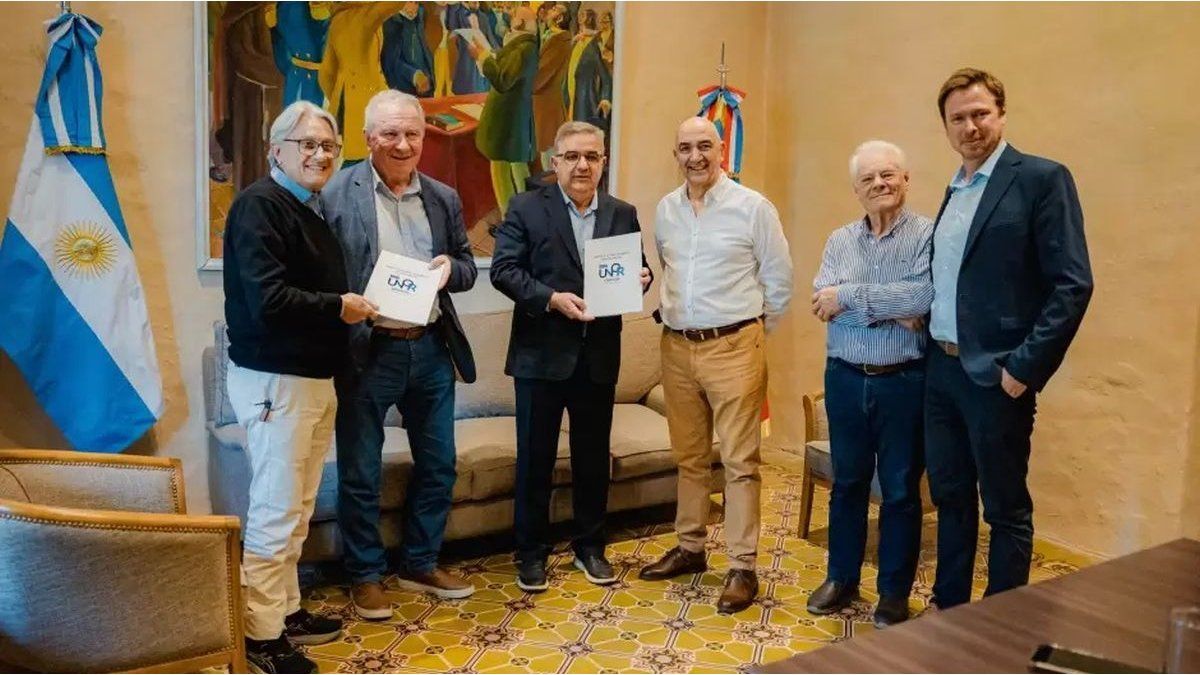The Industrial Union of Catamarca (UICa) presented to Governor Raúl Jalil a report with alarming data on the imbalances that exist between the north and the rest of the country. One of them measured the purchasing power per capita based on sales in supermarkets, the result of which showed that it is one of the worst because An inhabitant of the Norte Grande has a purchasing capacity that is equivalent to 52.7% compared to that of someone who resides in the Pampas Region.which “attacks productive development,” it was noted. Based on this statistical map, industrialists proposed a national law for Industrial Development of the NOA-NEA.
The report was delivered to provincial head by Carlos Muiapresident of the UICa, Carlos Colombo and Felipe Franco, also members of the board of directors. This is a job commissioned by the Industrial Unions of Northern Argentina (UNINOR) which includes statistical maps of comparative indicators of the regions, prepared by the Litvin and Associates Studywhich contains demographic, social, industrial and economic data. This study will also be delivered to each governor of the ten provinces that make up the Norte Grande, it was indicated.
Among the outstanding data, it was noted that The Norte Grande generates only 10.21% of the Gross Geographic Product (GDP) of the country, while the Pampeana Region represents 75.07% of the total. The GDP is a macroeconomic indicator that measures the value of goods and services produced in a province or region in a given period of time. And it is the provincial equivalent of the Gross Domestic Product (GDP), the indicator that measures the economic activity of a country.
The report also highlighted the low level of work recorded in the private sector and determined that it is 47% per 1,000 inhabitants of the country. Great Northa result that has its origin in the lack of investments and that, in return, promotes the generation of public jobs, whose weight in the north of the country is 52.4%. “If we do not generate employment and private investment in the Norte Grande, we will continue creating conditions for our young people to migrate and our surface will be underoccupied,” Muia told the press, after the delivery of the documentation.
In the social item, the study warns: “We find ourselves with a complex social situation, since the percentage of the population with unsatisfied basic needs (NBI) of Northern Argentina is 116% higher compared to the Pampas Region and this gets worse if we compare households with UBN: here the region’s index is 154% higher than the Pampas Region.”
Muia consulted on the feasibility of el national state guarantee funds, if a law is approved to favor the north of the country, the businessman said: “The national authorities are susceptible because the first thing they say is that there is no money. The problem is that either you create working conditions in the Norte Grande, or but it has to address the needs of the pockets of poverty that are generated in the slums of the Buenos Aires suburbs, provide security, more police, education and health.” “On one side or the other, the State has to provide money. What we say, without trying to be prebendary, is that conditions must be created so that in some way that distance with the Pampa Húmeda and the Central Region is broken, which is consumption,” he added.
Development incentives
In relation to the proposal that was approached to Jalil, “which should be coordinated with his counterparts in the north to elevate Congress,” it was indicated, it is a project of “NOA-NEA Industrial Development Law” to create tools that “compensate for the notable asymmetries between the region called Great North and the rest of the Argentine regions, especially the Pampas.
The initiative promotes, among other resources, a “Regime to promote the industrial development of Northern Argentina”, which includes Catamarca, La Rioja, Tucumán, Santiago del Estero, Salta, Jujuy, Chaco, Corrientes, Misiones and Formosaand proposes that industrialists can compute 40% of said base as a VAT tax credit. “The percentage of the benefit will amount to 50% with respect to employees who are included within the industry’s collective labor agreement and who carry out their activities outside the capital cities,” they explained. To be a beneficiary of this regime, if approved, companies would have to be up to date with employer contributions and maintain a level of employment within the geographical areas reached by the benefit, in such a way that it is not reduced by an amount greater than the 10% of the average of the last three years.
It is expected that in the future there will be meetings with other provincial leaders with the local representations of the Industrial Union. Once this stage is completed, it should be defined whether the initiative is promoted by the Chamber of Deputies or Senators, which involves a series of prior meetings to internalize its content to national parliamentarians.
Source: Ambito
David William is a talented author who has made a name for himself in the world of writing. He is a professional author who writes on a wide range of topics, from general interest to opinion news. David is currently working as a writer at 24 hours worlds where he brings his unique perspective and in-depth research to his articles, making them both informative and engaging.




